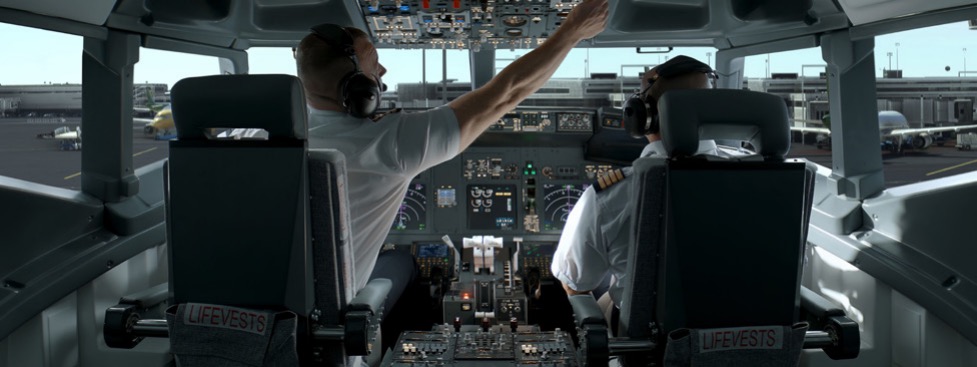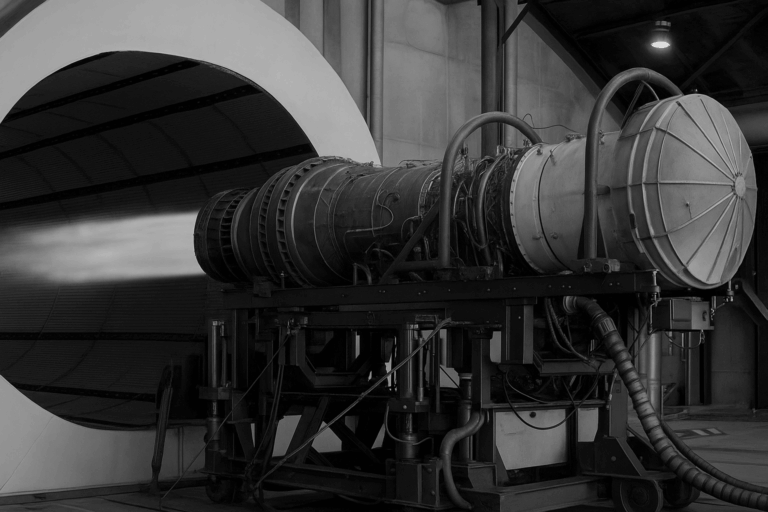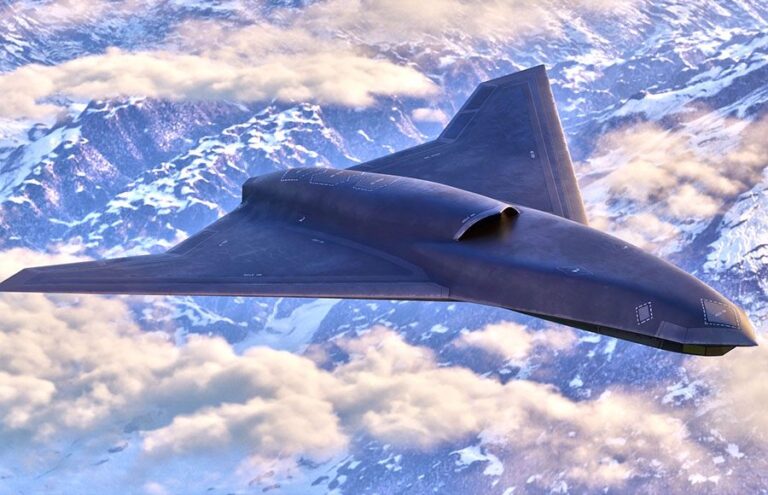
Precise training of pilots and cabin crew, professional aircraft maintenance, and an uncompromising commitment to the reliability of avionics form the foundation not only for safe flying but also for obtaining high-quality insurance, which is indispensable for companies in this industrial sector.
There are three pillars of modern aviation training: flight simulation, overall reality, and extended reality, which form the cornerstone of modern-day pilot training. Together, these technologies have transformed the way pilots acquire and refine their skills, increasing safety, efficiency, and overall proficiency.
Technology has also made the process of flying much safer and more efficient. Automated systems and drones have been used to reduce the risk of human error in the cockpit, and the use of GPS technology has made it much easier for pilots to navigate and stay on course.
10 Essential Techniques for Success in Pilot Training
Pre-Flight Inspection
Before each flight, you should perform a thorough pre-flight inspection of your aircraft to ensure it is safe to fly. This includes checking fuel, oil and other fluid levels, checking tires, brakes and landing gear, and inspecting control surfaces and other critical components.
Take-off and Landing
One of the most important techniques you will learn as a new pilot is the take-off and landing procedure. This includes the correct use of throttle, flaps, and other controls, as well as maintaining the correct bank angle and speed.
Navigation
Understanding navigation is essential for every pilot. This includes using navigational tools such as GPS and VOR, understanding how to read aeronautical charts, and identifying landmarks and other visual cues.
Communication
Effective communication is essential in aviation, both with other pilots and with air traffic control. New pilots should learn proper radio etiquette and understand common aviation terminology.
Weather Analysis
Before every flight, it is important to analyse the weather conditions to ensure they are safe to fly. This includes understanding how to read weather reports and forecasts, as well as recognizing weather patterns that can affect flight safety.
Emergency Procedures
While no pilot wants to experience an emergency, it is important to be prepared for any situation. This includes understanding emergency procedures such as engine failure, electrical failure, and loss of communication.
Instrument Flying
In conditions of poor visibility, it is essential for pilots to be able to fly solely with their instruments. Instrument flying involves understanding how to read and interpret flight instruments and how to maintain correct attitude, air speed, and altitude.
Aerodynamics
Understanding the principles of aerodynamics is essential for any pilot. This includes how lift is generated, the effects of drag and thrust, and how to maintain stability and control during flight.
Aircraft Systems
Pilots should have a thorough understanding of their aircraft’s systems, including electrical, hydraulic, and fuel systems, as well as instrumentation and avionics.
Decision-Making
New pilots should learn effective decision-making to ensure safe and successful flights. This includes understanding risk management, recognizing potential hazards, and making informed decisions based on available information.
The Modern Approach to Pilot Training
Today’s simulators are much more like a modern flight deck. Despite this, one thing has remained static for many years: how pilots were trained.
A visit to a simulator is a common part of every pilot’s career. These fantastic facilities allow pilots to train on a new aircraft type and receive refresher training throughout their career. Today’s aircraft have flight decks that are unrecognizable from those of decades ago. Much has changed, from improved automation to more sophisticated systems and accurate presentation of information to pilots. The simulators used today also much more closely resemble the flight deck and the external environment.
Modern flight simulators are highly sophisticated training tools that allow pilots to practice a wide range of scenarios in a safe and controlled environment. Today’s simulators can accurately replicate various weather conditions, equipment failures, and other key scenarios, allowing pilots to gain valuable experience and confidence in handling unexpected events.
The use of simulators in pilot training has increased over the years due to their effectiveness in providing a safe and controlled environment for practicing critical procedures and manoeuvres, while reducing the cost of the student’s aircraft rental needs.
Flight crews typically undergo refresher training once every six months, usually conducted in a simulator. The historical roots of refresher training were focused on demonstrating tasks such as critical manoeuvres attributed to aircraft incidents and accidents.
Appropriate pilot training and pilot flight experience is also one of the important criteria that insurers consider when accepting an aircraft for insurance coverage.
Who Needs Pilot and Flight Crew Aviation Insurance?
Anyone who employs pilots and flight crew will need aviation insurance to cover them while they are on duty. There are a variety of insurance products available for pilots and flight crew. Independent pilots would also need to have insurance.
Pilot Liability Insurance (special insurance product which can be concluded only in the Czech/Slovak Republic)
The insurance covers the liability of pilots, pilot-students and flight school instructors for damage to aircraft not owned by them but loaned to them or used by them for another legal reason. The aircraft are insured against accident via hull all risk insurance. The hull insurance of the aircraft is arranged at a deductible (e.g. CZK 200,000). If the aircraft is damaged due to the pilot, the aircraft owner/operator can claim damages up to the amount of the deductible from the pilot. The same applies to any loss of profit or costs related to the transport of the aircraft to the repair shop.
Such Pilot Liability Insurance coverage provides:
- Pilot liability insurance with a minimum limit of indemnity of CZK 200,000 to CZK 600,000
- Territorial coverage at least within the European Union, or worldwide
- We also recommend covering the financial loss insurance.
Mostly, the pilots in the flight schools are advised to take out insurance including financial damage/financial loss insurance. This is consequential financial damage, which means, for example, loss of profit and costs incurred by the injured party which are not damage to health, life or property, but which are incurred in connection with it (e.g. costs of transporting the damaged aircraft, loss of profit for renting the aircraft, etc.). This consequential financial loss will also be claimed against the pilot in the event of damage to the aircraft.

Pilot / Crew Loss of License due to permanent or total disablement pays a lump sum benefit for illness or injury from which there is no prospect of sufficient recovery to resume the duties of an airline/aircraft pilot.
Permanent total disablement means the insured person is totally unable to perform the essential duties of their own previous occupation as a license holder. If the insured becomes disabled during the period of insurance as a consequence of bodily injury or illness, then the insurer will pay the lump sum benefit shown in the insurance policy.
Temporary total disability means if the insured becomes disabled during the period of insurance because of bodily injury or general illness for longer than the waiting period, then the insurer will pay the temporary benefit, which is standardly 2% of the lump sum amount for a maximum of 24 months for each subsequent full month (and the relevant proportion of any partial month) for which the insured remains disabled during the benefit period.
A psychological/mental module must be added by separate endorsement at a premium loading of a certain percentage amount. This is defined as a mental or behavioural disorder as listed in the schedule of permitted mental or behavioural disorders appended to this policy. Including neuroses, psychoneuroses, psychopathy or psychoses, anxiety, stress, fatigue or mental or emotional diseases or disorders of any type.
Personal Accident for Pilots and Crew (Flight Personnel)
The insurance provides coverage for flight risks only (including embarking, disembarking of flight personnel), 24-hour whilst on duty, or full 24-hour coverage.
Airline Personnel Travel Insurance is provided for travel personnel and their families; covering medical expenses, money & personal possessions cover, personal accident insurance, personal liability insurance, travel cancellation cover, catastrophe cover, legal expenses cover, hijack insurance and withdrawal of services cover. You can add optional extras such as travel disruption (including bumping), winter sports and hazardous activity insurance, golf cover, business travel insurance, higher cover limits, and trips.
Life Insurance for Pilots is designed to financially safeguard the pilot’s family’s future if they pass away.
Pilot Income Protection pays the pilot a pre-agreed monthly benefit for a pre-agreed period if they are unable to carry out their normal occupation due to accident or sickness. It could already be part of life insurance if the pilots have concluded it.
Legal Expenses Insurance covers the costs involved in a legal dispute directly connected with the activity of a professional pilot. This product is designed for an airline employer providing benefits for all aircrew.
Safeguarding the Skies: The Vital Role of Anti-Icing Systems and Avionics
The Risks Resulting from Icing
Icing on aircraft increases weight and drag, reduces lift, and can reduce thrust. Ice reduces engine performance by blocking air intakes. When ice forms by freezing on impact or by freezing as runoff, it alters the aerodynamics of the surface by modifying the shape and smoothness of the surface, increasing drag and reducing wing lift or propeller thrust.
Both the reduction in lift on the wing due to the changed airfoil shape and the increase in weight due to ice loading will usually result in the need to fly at a higher angle of attack to compensate for the lost lift to maintain altitude. This increases fuel consumption and further reduces speed, increasing the likelihood of stalling, causing the aircraft to lose altitude.
Ice accumulates on helicopter rotor blades and aircraft propellers, causing mass and aerodynamic imbalances that are amplified as they rotate. Anti-icing systems installed on jet or turboprop engines help prevent airflow problems and avert the risk of serious internal engine damage due to ice ingestion. These concerns are most acute in turboprop engines, which tend to have sharp turns in the intake tract where ice accumulates.
Companies providing aircraft de-icing and/or other ground handling services are advised to have adequate insurance cover. This will provide ground handling insurance that will cover legal liability arising from injury or property damage to third parties.
Anti-Ice Systems in Aviation/Aircraft
In aviation, ice protection systems prevent the accumulation of atmospheric moisture on aircraft surfaces such as wings, propellers, rotor blades, engine intakes, and environmental control intakes. Ice buildup can alter the shape of airfoils and flight control surfaces and impair control and handling characteristics as well as performance. An anti-icing, de-icing, or anti-icing system either prevents the formation of ice or allows the aircraft to shed ice before it becomes hazardous.
They can generally be classified as hardware, software, or timing related. Failures can be introduced into a system during any phase of its life cycle, including requirements definition, design, manufacturing, or operation.
If ADC (Air Data Computers) fails, you have lost all the critical information for the flight. There is no position, heading, airspeed, altitude, or vertical speed. You will need to use contingency tools. In avionics, test systems play a key role in ensuring the smooth and safe operation of an aircraft. Avionics system testing is essential to identify potential deficiencies and verify that each component can withstand real-world operational challenges.
The absence of a functional system could lead to a tragic end – an aircraft crash. To cover extensive damage caused to the aircraft itself, damage resulting from third party injury or property damage, and in addition to bodily injury, death or property damage to passengers, we recommend that all aircraft owners and/or operators have complete aircraft insurance – hull all-risk insurance, aircraft and passenger liability insurance, and possibly personal accident in the pilot’s seat.
Regardless of the risks you face in aviation or other industrial sectors, we are ready to assist you in analysing and addressing them through a tailor-made insurance programme. RENOMIA GROUP is a leading insurance brokerage group in Central and Eastern Europe (CEE), and in collaboration with our minority shareholder Gallagher, we provide clients with highly professional services across more than 30 industry specialisations worldwide.
Text by: Hana Kulhová, Head of Aviation Department, RENOMIA, a. s.
Photo credit: Adobe Stock, Věra Křeháčková






